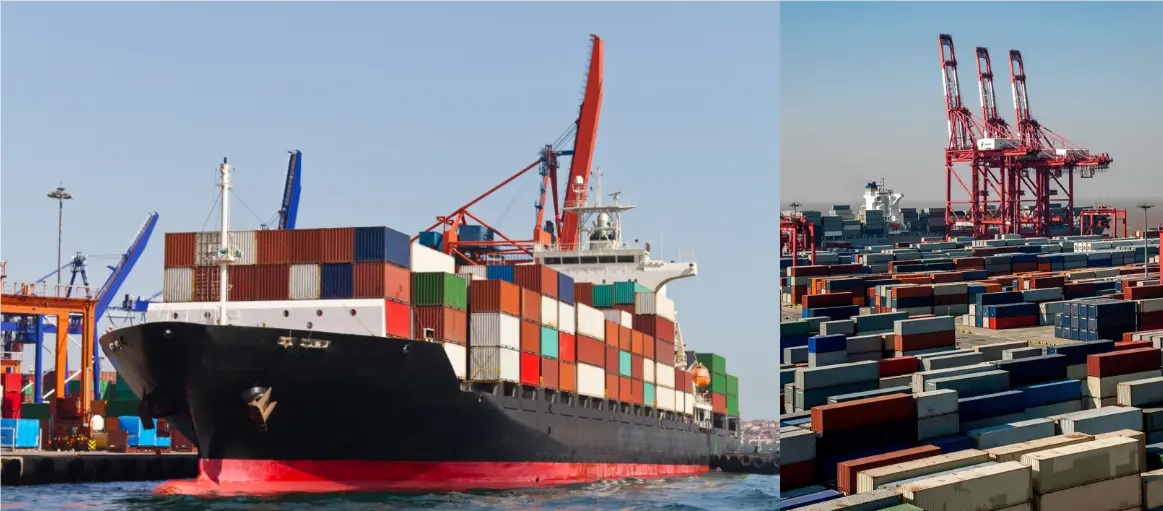The market situation of ocean freight has an impact on the goods dispatch.

In the near future, shipping costs are predicted to rise, so it is necessary to schedule orders for maritime transport as soon as possible.
The maritime shipping situation in 2025 presents a complex and volatile landscape. Looking back at 2024, the Red Sea crisis caused shipping costs for textile exports to double, causing significant distress for many textile enterprises. However, as the Israel-Palestine situation gradually eased, influenced by factors such as market demand and shipping capacity, shipping costs in 2025 showed a clear downward trend.
Freight Rates Surge at the Beginning of the Year, Then Plummet After the Holiday
From the current trends, maritime shipping rates in 2025 experienced some fluctuations at the beginning of the year. In the early stages, the Red Sea crisis forced shipping companies to detour around the Horn of Africa, increasing transportation costs. Additionally, cross-border merchants concentrated their shipments before the Spring Festival, leading to a surge in demand. Coupled with logistics companies raising their rates, shipping prices once soared. The demand spike before the Spring Festival led to a significant increase in shipping demand, with freight rates for the West Coast and East Coast of the United States rising by 20%-30% and 16%-18%, respectively. Logistics companies such as UPS and FedEx announced rate increases, further escalating cost pressures and driving up shipping costs.
During the Chinese Spring Festival, freight demand subsequently dropped, leading to a 14.42% decrease in freight rates for European routes, and 6.3% and 2.94% decreases for the West Coast and East Coast of the United States, respectively. The resolution of the U.S. strike crisis removed a factor that had been supporting freight rates on these routes, leading to further rate declines. An increase in shipping capacity supply: the global container fleet's nominal capacity increased by 10.5%. Although the Red Sea crisis caused some loss of capacity, the overall supply-demand gap eased, leading to a decrease in shipping costs.
Freight Rates May Face a "Price War"
According to predictions by the maritime analysis firm Sea-Intelligence, once the Red Sea situation stabilizes and if the Red Sea route reopens, container shipping rates could drop by 60% to 70% within six months. This change will profoundly affect the global shipping market's supply and demand dynamics and may bring about market conditions similar to or more severe than those at the end of 2023. Analysis suggests that once shipping companies resume using the Red Sea route, freight rates may sharply decline. Due to an oversupply in market demand, the container shipping market will plunge into a "price competition." Shipping companies, in a bid to capture market share, may slash prices to attract customers.
Tariffs Weigh Heavily on Maritime Shipping Volatility
The impact of tariffs on maritime shipping in 2025 cannot be overlooked, as the new U.S. administration's tariff policies may heighten global trade barriers. Beyond adjustments to tariffs on Mexico, Canada, and China, a series of changes in trade policies could affect global trade volumes and cargo flows, thereby altering the demand for shipping capacity and the direction of freight rates.
Michael Brach, president of the German Eurogate Group, believes that tariff wars not only increase the cost of goods and reduce trade volumes but may also disrupt supply chains, impacting global shipping demand. If the U.S. imposes additional tariffs, it could prompt export companies to rush shipments, temporarily driving up initial shipping costs. However, in the long term, tariff increases will suppress demand, reduce trade volumes, and consequently lead to a decline in shipping rates. For China, if the U.S. imposes additional tariffs on Chinese goods, it may cause some orders to shift from China to Southeast Asian countries, altering global trade patterns and further affecting global shipping demand and rates. For example, some goods originally shipped from China to the U.S. might instead be shipped from Southeast Asian countries, changing the origins and routes of maritime shipping and impacting the demand for capacity and freight rates on various routes.
In summary, the maritime shipping situation in 2025 faces numerous challenges and uncertainties, with geopolitical factors and global economic recovery influencing the direction of the shipping market. Tariff policies, as a significant variable in the trade sector, also play a crucial role in affecting maritime shipping. Shipping companies, freight forwarders, and import-export enterprises need to closely monitor market dynamics to adjust their strategies timely and respond to market changes.
